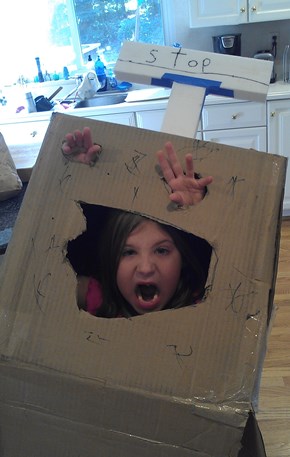The girls and I went to see Disney’s “Frozen” a few weeks ago (thanks, Memaw!). If you plan to see it and want to be surprised, you may want to wait to read this post until after you’ve seen it. But make sure you come back! I have so much to say about this movie, but for today I want to point out how beautifully this film expresses the healing and joy that can occur when we embrace with love, the parts of ourselves that we view as broken, or flawed.
In my earlier series, “Grace in the Muck,” I talked about the meaning of the lotus flower in yoga. This large, beautiful blossom emerges from stagnant, mucky waters, and then rises above its muddy origin. The lotus flower symbolizes the beauty and wholeness that can arise out of the muck of confusion and suffering.
In “Vision,” (sorry, no link — I removed this post because I have submitted it for publication elsewhere) I asked, “Can the cracks in our moments, the things that go wrong for us, the flaws we try to hide, really be channels, through which the light of grace and beauty reach us?”
You probably get by this point that I find this answer to be yes. When we make a conscious decision to bring compassionate presence to the difficulties in our day, we can transform our experience to one of relief and gratitude.
When we meet our own flaws with acceptance, we actually nourish our cells — we allow the body’s neuropeptides (“mood messengers”) to be expressed, communicating a message to the mind that is coherent with what the body is experiencing. We make a mind-body match that is experienced as a feeling of release and wholeness. (The Molecules of Emotion, 1999).
It feels good, to do this. As I mentioned in “Grace in the Muck,” Dee Gold and I are releasing our new curriculum for working with challenging feelings to nourish physical and emotional wellbeing — to use the muck to nourish the flower. The first workshop is “I-AM On the Path to Living Fully: Employing the Intention-Awareness Method.” (Saturday, January 25th, from 1:30 pm – 4:00 pm at Opus Yoga in the Kentlands. See Workshops on the Opus Yoga website. The workshop is already half-full, so if you want to join us, you may want to register soon!)
So now is when the Frozen movie spoiler comes in. Throughout the movie, Elsa cannot control this power she has, to create forms from snow and ice. The more she tries to hide and control it (“Conceal, don’t feel, don’t let them know…”), the more unwieldy and dangerous this power becomes. When she finally decides to “Let it Go,” and embrace her power as part of her authentic self, she experiences a breathtaking sense of liberation and discovers how powerful she truly is.
Elsa continues to believe, however, that she has no control over her experiences and their intensity. Finally, in an act of “true love” toward her sister, Elsa learns that she can draw these stormy powers through her body, temper them with love, regulate their strength, and create what she intends to create.
 (Photo from the work of Masaru Emoto)
(Photo from the work of Masaru Emoto)
These themes are just dripping with yogic beauty, and there also is so much more in this film for parents of children with special powers (or needs) and their own intense emotions. When I talked with my daughters about playing this song when they are feeling stormy as a way to celebrate all of their feelings, they ended up playing this song about 16 times in a row. They made paper snowflakes and threw them around their rooms while belting out “Let it Go.” Sixteen times, or so. Lots of good medicine in here. This may warrant another post.
For now, I leave you with the clip that shows us Elsa’s moment of transformation, as she allows and honors the fullness of who she is. Also, I have to express my gratitude to Kristen Anderson-Lopez and Robert Lopez for delicious song lyrics like “My soul is spiraling in frozen fractals all around”….
Enjoy!
Love,
Shannon

















 In her book,
In her book,